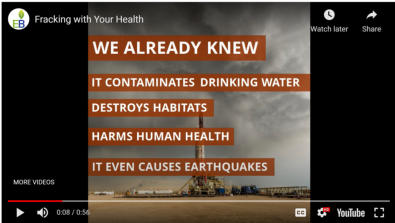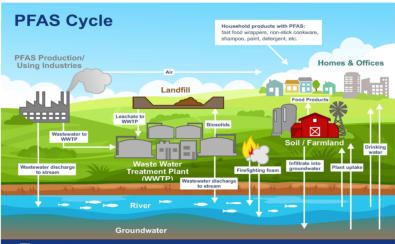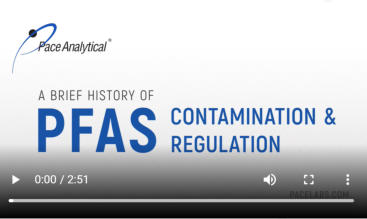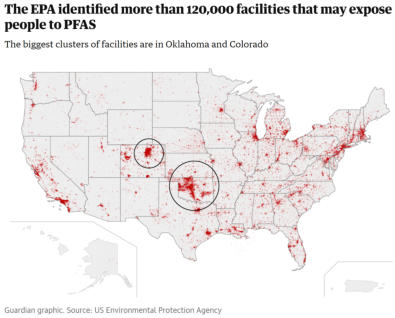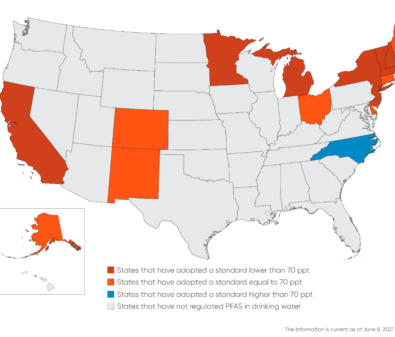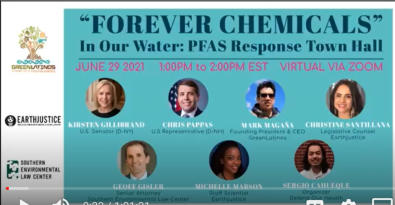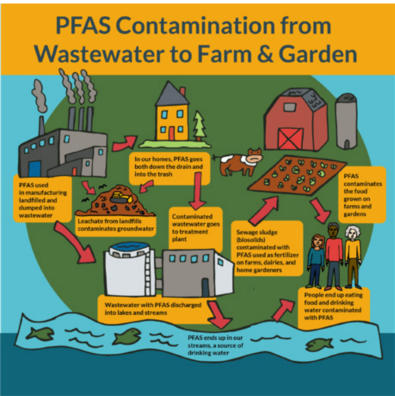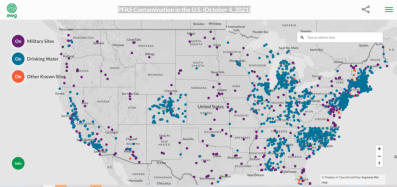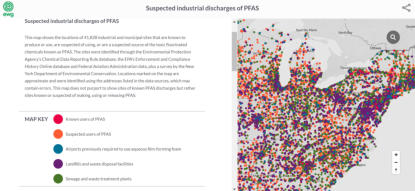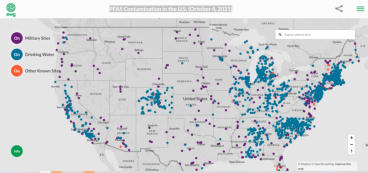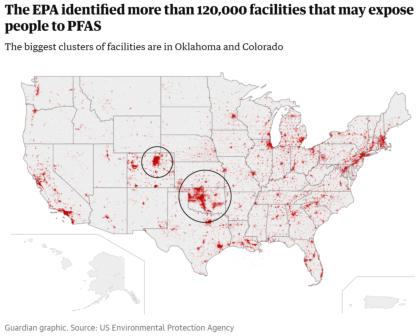

Move Past Plastic, MPP

© Lorem ipsum dolor sit Nulla in mollit pariatur in, est ut dolor eu eiusmod lorem
PFAS Campaign
Request the MPP
Ensure PFAS-Free Drinking &
Wastewater Toolk
NEWS • PFAS Bans, Restrictions Go Into Effect in States in 2023 • Department Of Environmental Protection Outlines Plans To Ramp Up PFAS Monitoring Following Report o DEP Takes Action To Protect Public After Releasing First-Of- Its-Kind PFAS Survey Findings With The United States Geological ServicTOP INDUSTRIES FOR PFAS RULEMAKING4
EPA’s PFAS Strategic Roadmap: EPA’s Commitments
to Action 2021—20245
Federal PFAS Report Card, by EWG 6 Shows what the
numerous regulating bodies are doing about PFA
PFAS Bans, Restrictions Go Into Effect in States in
2023
PFAS - Safer States
Ensure PFAS free Drinking Water Series
I i Learn more about ensuring safe drinking water from per and poly- fluoroalkyl substances (PFAS). The EPA has recognized this classification of persistent hazardous chemicals. PFAS compounds are pervasive in our society. They are found in our bodies, household dust, clothing, cosmetics, and many other products we use daily and in drinking water. Learn about PFAS and how to engage your municipality in testing their drinking water for these toxic bioaccumulating chemicals. Whether you are a municipal or elected leader, water specialist, environmentalist, or citizen, you will be introduced to the information you need to test your drinking water for PFAS or to request your municipality test the community's drinking water for PFAS. You will be introduced to three toolkits. The Engaging Municipalities in the PFAS Testing Toolkit - which will include: • History • Define and share their uses • Health and Environmental Harms • Regulations or lack thereof • Potential PFAS Contamination Sites Maps for your community • Laboratory Testing: EPA and DEP Certified Labs and How to Test for PFAS • How to Avoid Sources of PFAS • At-home drinking water filtration • How to avoid, limit, and test for PFAS in drinking water. • Solutions for PFAS contamination include UCMR5. PFAS Talking Points Toolkit - Provides information on topics of concern around PFAS: military sites, health, biosolids, etc. Media Toolkit - Outlines how to locate your legislators, phone scripts, social posts, and how to write letters to the editor, If you want to learn more and have support with testing your water for PFAS and cannot attend a meeting, please email Tamela Trussell at movepastplastic@gmail.com to request a personal presentation that fits your schedule.Ensure Safe Drinking and Wastewater -
PART 2 - Engaging Municipalities
• You will be shown step-by-step how to reach out to your municipal stakeholders. • You will learn how to locate your drinking water facility, determine if your water has been tested, and who, how, and when to approach stakeholders. • You will learn what message to convey to solicit your request to test the drinking and wastewater. • We will review the 10 min. ppt slides presentation and how to add your local contamination maps. If you want to learn more and have support with testing your water for PFAS and cannot attend a meeting, please email Tamela Trussell at movepastplastic@gmail.com to request a personal presentation that fits your schedule.PFAS Presentation/Discussion (also may
be requested)
by request: Local PFAS Presentation - includes “your” potential local PFAS contamination sites from mapsForever chemicals' found in local waters as
state and feds seek to limit exposure
by Crispin Havener Tuesday, November 23rd 2021 WJAL NEWEPA Releases Preliminary Results of PFAS
Sampling in Public Water Systems Under
UCMR 5
These “forever” chemicals build up in the human bloodstream causing many health harms. These especially impact the health of infants and children. They are shown to cause serious illnesses including some cancers, thyroid conditions, ulcerative colitis, elevated cholesterol, suppress immune response to vaccines, decrease womens’ fertility and birth weight. The DEP-BSDW needs to address these health harms by implementing the following protections against PFAS-related pollution: 1. Monitor and Report for 18 PFAS listed in the test 537.1 during all four quarters 2. If MCL (Maximum Contamination Level) is found to be above 1-6ppt in 2 consecutive quarters: Begin implementation of methods to decrease contamination (i.e. filtration systems, finding source & stopping it there) 3. Set the MCLs at 6 ppt for the 18 PFAS in the 537.1 test as advised by the Delaware Riverkeepers Network (DRN). 4. Require inspections at all wells one-half mile from potential sources of PFAS contamination including military bases, fire training schools/sites, airports, landfills, manufacturing facilities, and state/federal cleanup sites. Over one million Pennsylvania residents get their drinking water from a private well. Drinking water from these wells are not regulated. 5. Hold chemical manufacturers of PFAS and the products that use them financially and physically accountable for their impacts and cleanup by implementing producer responsibility regulations. To contact DEP and share your concern you can sign onto a petition letter and/or create and send your own thoughts by clicking the link below.A wealth of information on
everything PFAS
State-by-State Regulation of PFAS Substances in
Drinking Water
Look for possible PFAS contamination
sites near you.
There are 2 types of maps by the Environmental Working Group, EWG. One for Suspected industrial discharges and one for PFAS Contamination in the U.S. (October 4, 2021). This displays military sites and drinking water. Bare in mind there are many more untested and unidentified sites with possible PFAS contamination that have not been mapped. "Legacy Landfill" are one type of sites that are not mentioned or tested at all. NOTE: Carefully hover your mouse so that it turns into a hand with a pointed index finger. Then click your left mouse button to populate the name and PFAS data on that site. It is a little glitchy. Zooming in can help. PFAS Contamination in the U.S. (October 4, 2021)




For more things you can do.
Review for Move Past Plastic – Tamela
Trussell
“What can I say? I was totally wowed by her PFAS Part I and II presentations! She is a dynamic and an engaging speaker who truly knows her stuff! I learned so much from the presentations and then receiving the PFAS Toolkit, which is chocked full of information and resources – that was an added bonus. I continue to refer people to her as she indeed knows more about the subject than anyone I am yet to meet. She explains things so people can easily understand, and her passionate work with Move Past Plastic as an activist and an educator will surely move us toward the changes we need to reduce contamination in our food, water, and air. Thank you, Tamela!” Tami A. Renkoski, CIH Certified Industrial Hygienist Allegan, MichiganSolutions to PFAS
PFAS Action: A Guide To PFAS Pollution
Request a Presentation
Join this PA PFAS Multi-site Health Study
Are you eligible? We are currently recruiting adults (ages 18+) and children (ages 4-17) who lived in the following Bucks and Montgomery townships between 2005 and 2017: Horsham, Ivyland, Warminster, Warrington, Abington, Hatboro, Northampton, Upper Dublin, Upper Moreland, Upper Southampton, or Warwick. Children whose mothers lived in these areas between 2005 and 2017, prior to their child's birth, may also be eligible to participate.What are PFAS and why are they
dangerous? Is teflon safe?
PFAS were common in clothing and non-stick cookware like teflon. Now they're linked to serious health effects... and they live on in drinking water across the country. What are PFAS and are PFAS dangerous?Products containing PFAS
EPA’s Meaningful and
Achievable Steps You Can Take
to Reduce
Your Risk
Sources of these compounds have been used extensively in consumer products from computer chips to a bag of popcorn. You can find them in products such as carpets, clothing, fabrics for furniture, paper packaging for food, and other materials (e.g., cookware) designed to be waterproof, stain-resistant, or non-stick. They are used in industrial equipment, firefighting form, clothing and equipment. They are most prevalent in the fossil fuel, petrochemical, and plastics industries.NEW REPORT: FRACKING WITH “FOREVER
CHEMICALS”
VIDEO in Spanish
“Forever Chemicals”: In Our Water: PFAS Response Town Hall in Spanish These “forever chemicals” were found in all of the nine products tested by the Ecology Center of Michigan and Sierra Club and marketed as “eco” or “natural” and eight of the nine exceeded screening levels set by the state of Maine. PFAS in fertilizers could cause garden crops to be a source of exposure for home gardeners.Environmental Health Project's handout
on Per- and Polyfluoroalkyl Substances
(PFAS) and Shale Gas Development
https://youtu.be/tf66ULDrYnI?si=OQLYUcuUZAV6VVOp




Lending a helping hand.


Sponsored by TLC Foundation


























Move Past Plastic, MPP

Sponsored by TLC Foundation

© Lorem ipsum dolor sit Nulla in mollit pariatur in, est ut dolor eu
eiusmod lorem
PFAS Campaign
Request the MPP
Ensure PFAS-Free Drinking &
Wastewater Toolk
NEWS • PFAS Bans, Restrictions Go Into Effect in States in 2023 • Department Of Environmental Protection Outlines Plans To Ramp Up PFAS Monitoring Following Report o DEP Takes Action To Protect Public After Releasing First-Of-Its- Kind PFAS Survey Findings With The United States Geological ServicTOP INDUSTRIES FOR PFAS RULEMAKING4
EPA’s PFAS Strategic Roadmap: EPA’s
Commitments to Action 2021—20245
Federal PFAS Report Card, by EWG 6 Shows what
the numerous regulating bodies are doing about
PFA
PFAS Bans, Restrictions Go Into Effect in States in
2023
PFAS - Safer States
Ensure PFAS free Drinking Water
Series
I i Learn more about ensuring safe drinking water from per and poly- fluoroalkyl substances (PFAS). The EPA has recognized this classification of persistent hazardous chemicals. PFAS compounds are pervasive in our society. They are found in our bodies, household dust, clothing, cosmetics, and many other products we use daily and in drinking water. Learn about PFAS and how to engage your municipality in testing their drinking water for these toxic bioaccumulating chemicals. Whether you are a municipal or elected leader, water specialist, environmentalist, or citizen, you will be introduced to the information you need to test your drinking water for PFAS or to request your municipality test the community's drinking water for PFAS. You will be introduced to three toolkits. The Engaging Municipalities in the PFAS Testing Toolkit - which will include: • History • Define and share their uses • Health and Environmental Harms • Regulations or lack thereof • Potential PFAS Contamination Sites Maps for your community • Laboratory Testing: EPA and DEP Certified Labs and How to Test for PFAS • How to Avoid Sources of PFAS • At-home drinking water filtration • How to avoid, limit, and test for PFAS in drinking water. • Solutions for PFAS contamination include UCMR5. PFAS Talking Points Toolkit - Provides information on topics of concern around PFAS: military sites, health, biosolids, etc. Media Toolkit - Outlines how to locate your legislators, phone scripts, social posts, and how to write letters to the editor, If you want to learn more and have support with testing your water for PFAS and cannot attend a meeting, please email Tamela Trussell at movepastplastic@gmail.com to request a personal presentation that fits your schedule.Ensure Safe Drinking and
Wastewater - PART 2 - Engaging
Municipalities
• You will be shown step-by-step how to reach out to your municipal stakeholders. • You will learn how to locate your drinking water facility, determine if your water has been tested, and who, how, and when to approach stakeholders. • You will learn what message to convey to solicit your request to test the drinking and wastewater. • We will review the 10 min. ppt slides presentation and how to add your local contamination maps. If you want to learn more and have support with testing your water for PFAS and cannot attend a meeting, please email Tamela Trussell at movepastplastic@gmail.com to request a personal presentation that fits your schedule.PFAS Presentation/Discussion (also
may be requested)
by request: Local PFAS Presentation - includes “your” potential local PFAS contamination sites from mapsForever chemicals' found in local
waters as state and feds seek to limit
exposure
by Crispin Havener Tuesday, November 23rd 2021 WJAL NEWEPA Releases Preliminary Results of
PFAS Sampling in Public Water
Systems Under UCMR 5
These “forever” chemicals build up in the human bloodstream causing many health harms. These especially impact the health of infants and children. They are shown to cause serious illnesses including some cancers, thyroid conditions, ulcerative colitis, elevated cholesterol, suppress immune response to vaccines, decrease womens’ fertility and birth weight. The DEP-BSDW needs to address these health harms by implementing the following protections against PFAS-related pollution: 1. Monitor and Report for 18 PFAS listed in the test 537.1 during all four quarters 2. If MCL (Maximum Contamination Level) is found to be above 1- 6ppt in 2 consecutive quarters: Begin implementation of methods to decrease contamination (i.e. filtration systems, finding source & stopping it there) 3. Set the MCLs at 6 ppt for the 18 PFAS in the 537.1 test as advised by the Delaware Riverkeepers Network (DRN). 4. Require inspections at all wells one-half mile from potential sources of PFAS contamination including military bases, fire training schools/sites, airports, landfills, manufacturing facilities, and state/federal cleanup sites. Over one million Pennsylvania residents get their drinking water from a private well. Drinking water from these wells are not regulated. 5. Hold chemical manufacturers of PFAS and the products that use them financially and physically accountable for their impacts and cleanup by implementing producer responsibility regulations. To contact DEP and share your concern you can sign onto a petition letter and/or create and send your own thoughts by clicking the link below.A wealth of information on
everything PFAS
State-by-State Regulation of PFAS Substances in
Drinking Water
Look for possible PFAS
contamination sites near you.
There are 2 types of maps by the Environmental Working Group, EWG. One for Suspected industrial discharges and one for PFAS Contamination in the U.S. (October 4, 2021). This displays military sites and drinking water. Bare in mind there are many more untested and unidentified sites with possible PFAS contamination that have not been mapped. "Legacy Landfill" are one type of sites that are not mentioned or tested at all. NOTE: Carefully hover your mouse so that it turns into a hand with a pointed index finger. Then click your left mouse button to populate the name and PFAS data on that site. It is a little glitchy. Zooming in can help. PFAS Contamination in the U.S. (October 4, 2021)










For more things you can do.
Review for Move Past Plastic –
Tamela Trussell
“What can I say? I was totally wowed by her PFAS Part I and II presentations! She is a dynamic and an engaging speaker who truly knows her stuff! I learned so much from the presentations and then receiving the PFAS Toolkit, which is chocked full of information and resources – that was an added bonus. I continue to refer people to her as she indeed knows more about the subject than anyone I am yet to meet. She explains things so people can easily understand, and her passionate work with Move Past Plastic as an activist and an educator will surely move us toward the changes we need to reduce contamination in our food, water, and air. Thank you, Tamela!” Tami A. Renkoski, CIH Certified Industrial Hygienist Allegan, MichiganSolutions to PFAS
PFAS Action: A Guide To PFAS
Pollution
Request a Presentation
Join this PA PFAS Multi-site Health
Study
Are you eligible? We are currently recruiting adults (ages 18+) and children (ages 4-17) who lived in the following Bucks and Montgomery townships between 2005 and 2017: Horsham, Ivyland, Warminster, Warrington, Abington, Hatboro, Northampton, Upper Dublin, Upper Moreland, Upper Southampton, or Warwick. Children whose mothers lived in these areas between 2005 and 2017, prior to their child's birth, may also be eligible to participate.What are PFAS and why are they
dangerous? Is teflon safe?
PFAS were common in clothing and non-stick cookware like teflon. Now they're linked to serious health effects... and they live on in drinking water across the country. What are PFAS and are PFAS dangerous?Products containing PFAS
EPA’s Meaningful and Achievable
Steps You Can Take to Reduce Your
Risk
Sources of these compounds have been used extensively in consumer products from computer chips to a bag of popcorn. You can find them in products such as carpets, clothing, fabrics for furniture, paper packaging for food, and other materials (e.g., cookware) designed to be waterproof, stain-resistant, or non-stick. They are used in industrial equipment, firefighting form, clothing and equipment. They are most prevalent in the fossil fuel, petrochemical, and plastics industries.NEW REPORT: FRACKING WITH “FOREVER
CHEMICALS”
VIDEO in Spanish
“Forever Chemicals”: In Our Water: PFAS Response Town Hall in Spanish These “forever chemicals” were found in all of the nine products tested by the Ecology Center of Michigan and Sierra Club and marketed as “eco” or “natural” and eight of the nine exceeded screening levels set by the state of Maine. PFAS in fertilizers could cause garden crops to be a source of exposure for home gardeners.Environmental Health Project's
handout on Per- and
Polyfluoroalkyl Substances (PFAS)
and Shale Gas Development
https://youtu.be/tf66ULDrYnI?si=OQLYUcuUZAV 6VVOp



